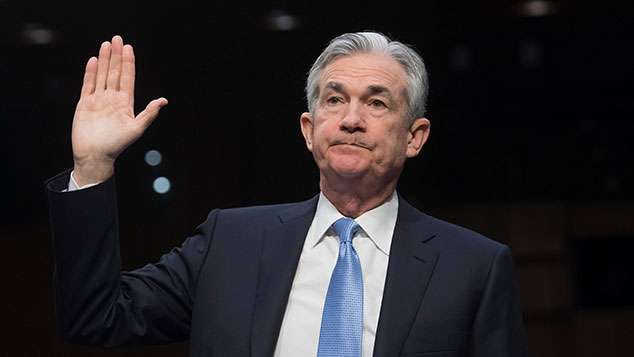
In the early 1980s, then-Federal Reserve boss Paul Volcker helped to ignite a long bond bull-market by taking drastic action to stop inflation in its tracks.
His successor, Alan Greenspan, took Volcker’s disinflationary dividend and used it to underwrite risk-taking by Wall Street, thus inflating a series of credit bubbles.
Greenspan handed Ben Bernanke an economy on the verge of a deflationary collapse, as a result of those credit bubbles bursting. Bernanke took drastic action to stop deflation from taking hold.
Janet Yellen kept Bernanke’s policies of financial repression going. She convinced a chastened Wall Street that risk-taking was underwritten again.
But meanwhile, deflation had been defeated. The long bond bull-market was over. Interest rates are now rising.
New Fed chief Jerome Powell is now taking over just as the biggest, most influential trend in recent financial history is at a turn.
Talk about timing…
Don’t underestimate the power of the Fed
The above is one way to view recent financial history – through the prism of US central bankers.
Of course there have been plenty of other things going on over the past 35 years – a huge opening up of the global economy, the addition of billions of people able to participate in relatively free markets, the communications revolution.
But in terms of markets, I don’t think you can underestimate the role played by the Fed. It is, after all, the steward of the world’s reserve currency, and therefore has a significant role in setting one of the most important prices in the market – that of the US dollar.
And in any case, it’s a handy way to demarcate phases of the market. Volcker slays inflation and the market starts to recover. Greenspan tops up the punch bowl all the way along the line until the great moderation into the Great Recession.
Bernanke then slays deflation and the market starts to recover. And Yellen follows Greenspan in keeping the punch bowl topped up.
Now Powell is taking the helm. And what he’s inheriting doesn’t look pretty.
The US ten-year Treasury has now popped up to nearly 2.8%. This is its highest level since early 2014. If you don’t believe that the bond bull-market is over by now, then you have to admit that it’s taking a seriously long nap.
Even Greenspan – always up for a comedy moment – this week warned that both bonds and equities are in bubble territory. Who’s fault is that, eh, Alan? (There’s still a part of me that wonders if Greenspan’s entire career has been an epic piece of performance art about the absurdities of money.)
Anyway, as Alberto Gallo of Algebris puts it, it looks like this is it. “There are reasons to believe that more yield widening is coming. The question is whether central banks will be able to control the spill-over to risk assets.”
In other words, can stocks cope with rising interest rates? Or is it all going to go pear-shaped?
Gallo is sceptical, let’s put it that way. “Signs of euphoria – or irrational complacency, as we named it – are abundant.” Investors are mostly on one side of the boat – the one that depends on “a stable and low interest rate environment”.
If you think that “normalisation” can happen without causing a shock, “then prepare for a Wile E Coyote moment”, warns Gallo.
Whatever the new boss does, markets are in for a shock
What makes this point particularly pertinent is the fact that markets may be misjudging Powell. They have assumed (and I haven’t been inclined to disagree) that he’d be just another Yellen. Particularly as Donald Trump surely can’t be keen on rising interest rates (what property millionaire is?)
So it’s interesting to see that his attitude looks quite different. David Rosenberg of Gluskin Sheff has pulled up some interesting transcripts from 2012, when Powell was objecting to the third bout of quantitative easing (QE).
“My concern is that for very modest benefits, we are piling up risks for the future and that it could be habit-forming.” Specifically, he was concerned about the prices of unwinding QE – “when it is time for us to sell, or even to stop buying, the response could be quite strong”.
And as John Dizard in the FT writes, another piece from the same meeting notes that: “We look like we are blowing a fixed-income duration bubble right across the spectrum that will result in big losses when rates come up down the road. You can almost say that is over strategy.”
You have to wonder if Janet might give a little chuckle as she hands this poisoned chalice over. “Hey, Mr Cassandra! Remember that thing you said in 2012? You were right! Have fun!”
Will Powell be more hawkish than expected? Or will he realise, once in office, that discretion is the better part of valour, and try to keep a lid on the whole thing?
Whatever he does, I struggle to imagine a world where volatility doesn’t at least perk up a bit. And given the extreme valuation of stocks, it’s hard to see a world where they don’t take a bit of a knock in the process.
Here’s just one party-pooping statistic also highlighted by Rosenberg: “if the S&P 500 had merely followed earnings growth this cycle, it would be sitting at 2,000 today”.
It’s currently at 2,800-odd.